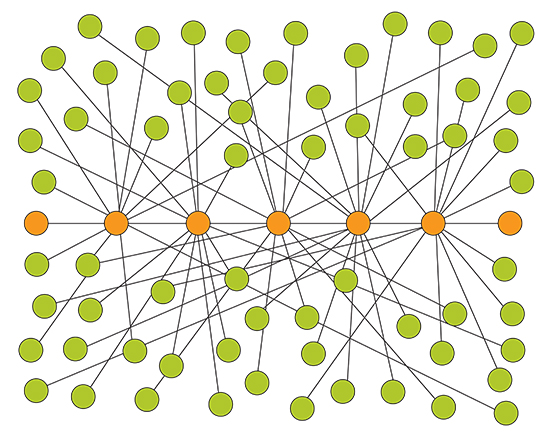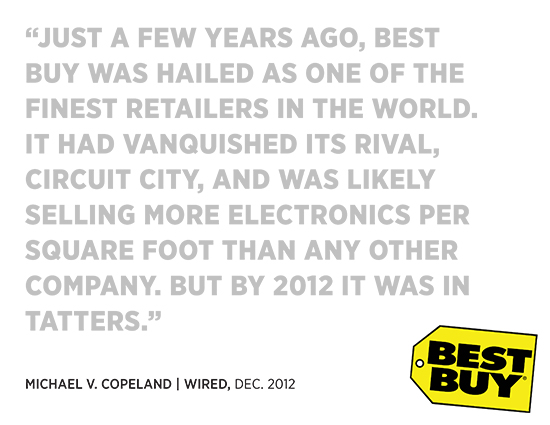
What is the connection economy?
The connection economy rewards value created by building relationships and fostering connections, rather than assets and “stuff,” like the industrial economy. The industrial economy values more, better, faster, whereas the connection economy builds on who you know, what you know and how that knowledge influences your connections.
In the context how we define the connection economy, I led an Architecture Forum discussion about the value of social media as part of a business development strategy for architecture firms. We discussed the pros and cons of implementing social media. (View the presentation materials here).

We looked at how business communication has developed and adapted alongside technology as well as how the internet is a game-changer across the board. I referenced the WIRED article, “Death by a Billion Clicks,” about the decline in sales Best Buy has suffered as showrooms become less and less popular in favor of price-comparison shopping on Amazon. By looking at how the internet has already changed our individual, everyday behavior and the way we consume news, our discussion established that we’ve entered a new era of communication and information consumption.
We discussed the pros of social media as a way to amplify a firm’s online footprint and as another avenue for touch-points with potential clients, staff and consultants. Furthermore, I shared the potential negatives to implementing social media such as, the time invested, reduced control over one’s message, the chatter out there and the perception that social media is just for “kids.” Lastly I shared two case studies from Amanda Walter and Holly Berkley’s book, Social Media in Action. We examined Edgewater Resources’ use of Facebook to reach community groups and HMC Architects implementation of a blog to change the perception of their firm.

With all these examples, I opened the discussion up to the group, prompting with a few questions:
- What excites you about social media?
- What is the worst case scenario you can imagine from social media?
- Is there an alternative?
Our lively discussion covered hesitations, frustrations and discoveries. With this new reality on our hands of changed expectations regarding easy access to information and a desire for the outside to look in and understand individual firms, we discussed possible ways to better reach audiences. We discussed using an online platform to engage and start conversations with user groups in ways beyond site visits and surveys.
Further group discussion included:
- Potential ways to leverage social media outlets to work with user groups, gain feedback beyond the survey platform and engage groups.
- Concerns over censorship: what’s too much? What isn’t enough? How do we find the balance? How do individuals manage the blurring between the personal and professional self?
- What’s the next step with the rise of more visual platforms like FlipBook and Pinterest?
- How do you figure out who is credible?
- How do you figure out which channel works best for you?
- Is there a way to elevate discourse and not become part of the chatter?
- Concerns over barriers to entry, like pay walls.
There are no quick answers about exactly what to do. One of the reasons I think social media is such an exciting outlet is because there is no road map. Anyone can do as much or as little as one would like with it. I think as a component of a firm’s overall strategies to reach out to target groups, social media can be a great tool. It is not the quick-fix solution, but it can create connections where they didn’t exist before.
Social media as a valuable tool is a part of our on-going conversations and we’d love to hear what you think – what are your experiences? What’s working? What are examples of blogs you love? What is your social media modus operandi?
Resources:
“Magazines’ Digital Circulation More Than Doubles — But Remains Small,” Nat Ives, Ad Age, March 29, 2013
“Newsweek Announces Digital-Only Plans,” by Lucia Moses, Adweek, October 18, 2012
“TAPping into Social Media in Architecture,” Patty Swisher, AIA Pittsburgh Chapter, Feature Article,
March 19, 2013
“Chicago papers lose print circulation, gain in digital,” by Lynne Marek, ChicagoBusiness.com, April 30, 2013
“Socially Yours,” Amanda Kolson Hurley, Landscape Architecture Magazine, April 2013
“What ‘The Boston Globe’ Got Right and Why It Should Change How Papers Think,” John Nichols, The Nation,
April 20, 2013
“Newspapers Post Gains in Digital Ciculation,” Christine Haughney, The New York Times, April 30, 2013
“No surprises: Print readership declines, online audience grows,” by Kelly Johnson,
Sacramento Business Journal, October 30, 2012
“Death by a Billion Clicks,” Michael V. Copeland, WIRED, December 2012
The Icarus Deception, Seth Godin, 2013
Social Media in Action: Comprehensive Guide for Architecture, Engineering, Planning and Environmental Consulting Firms, Amanda Walter and Holly Berkley, 2012


